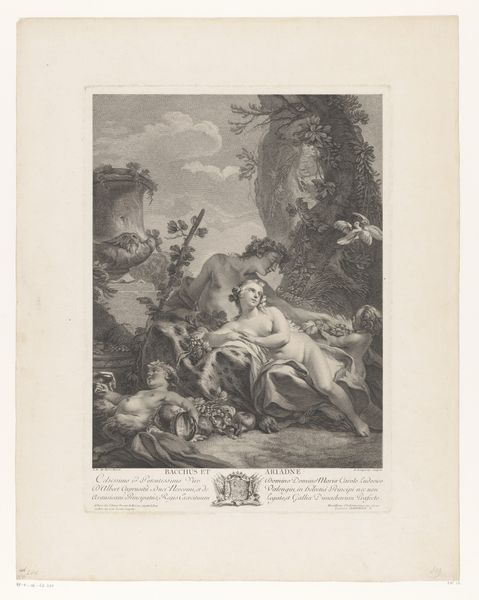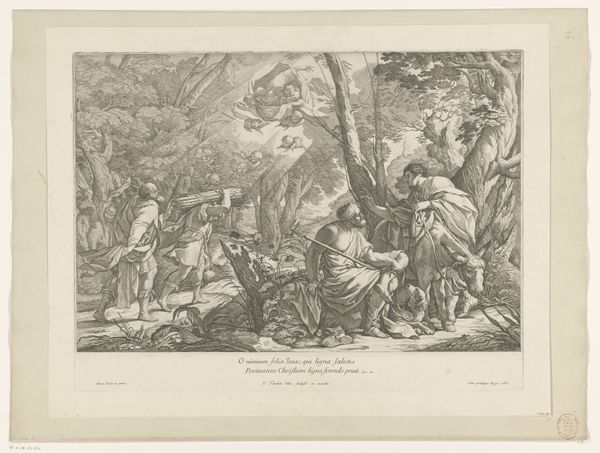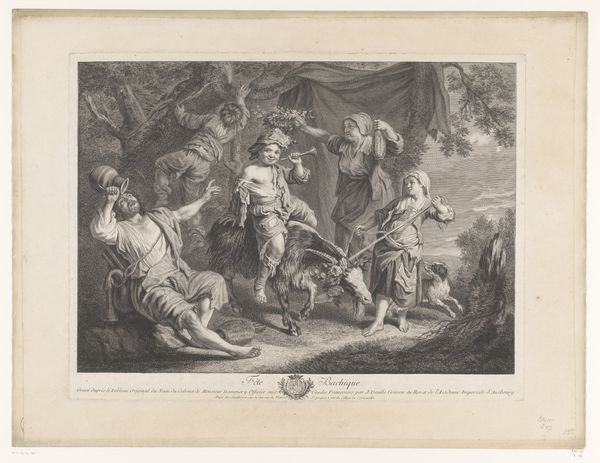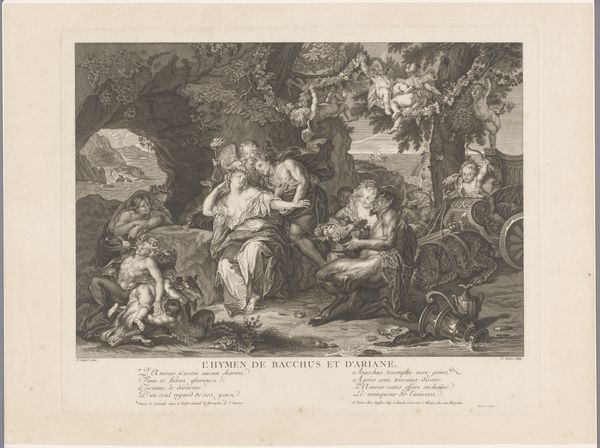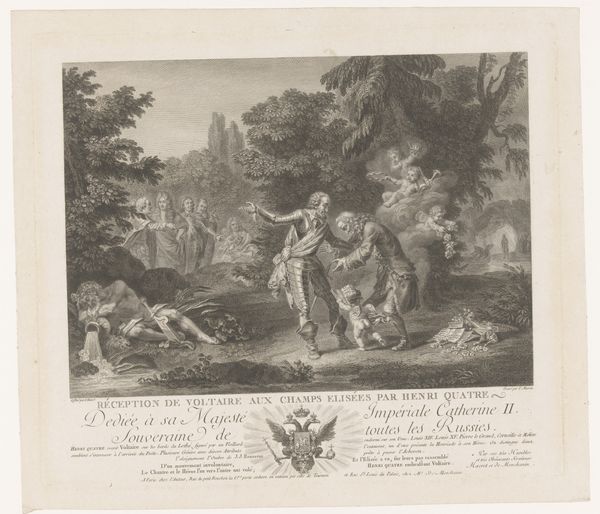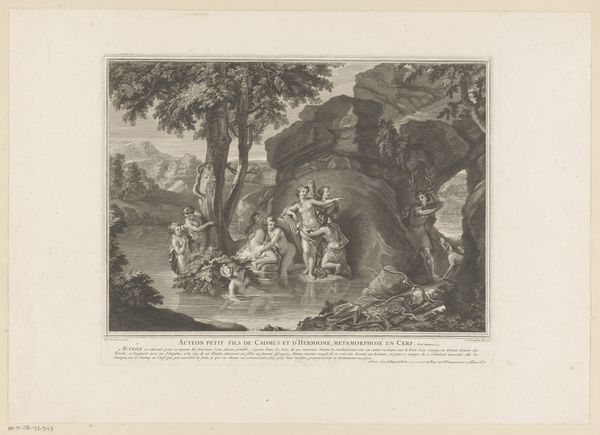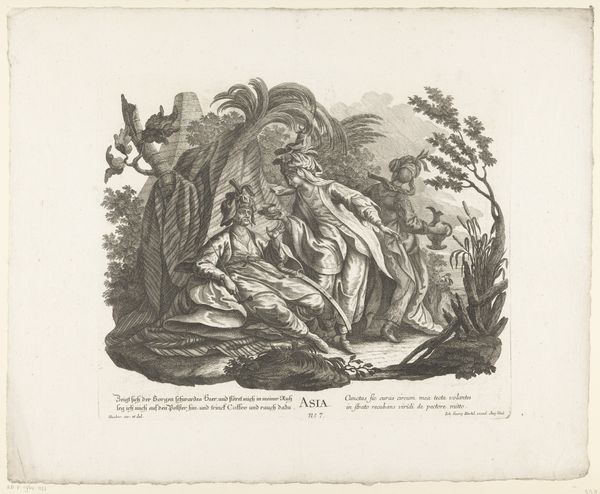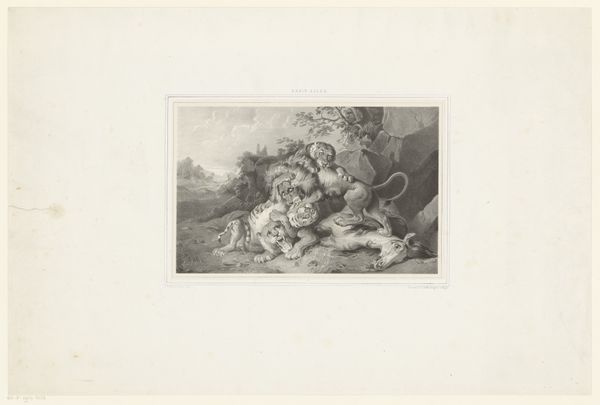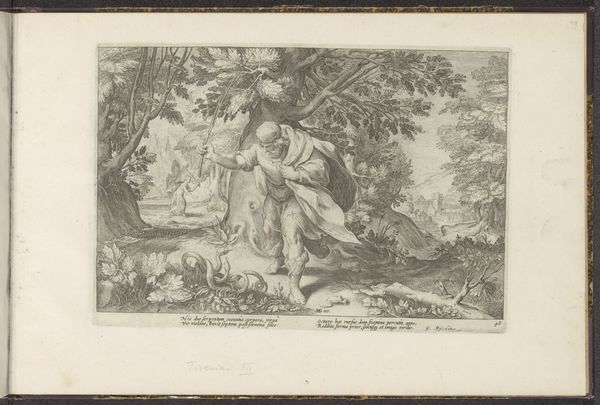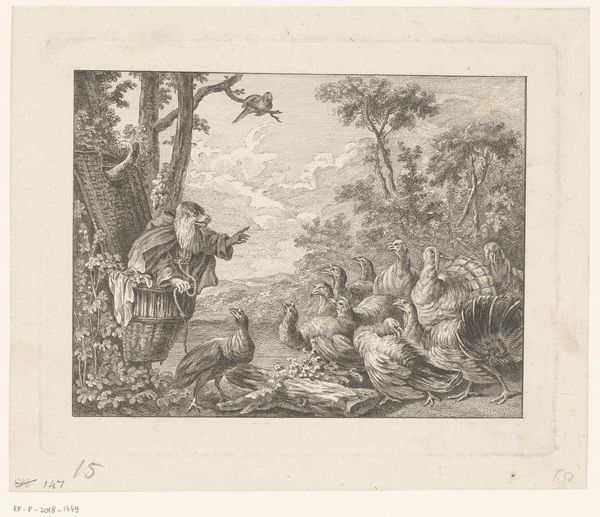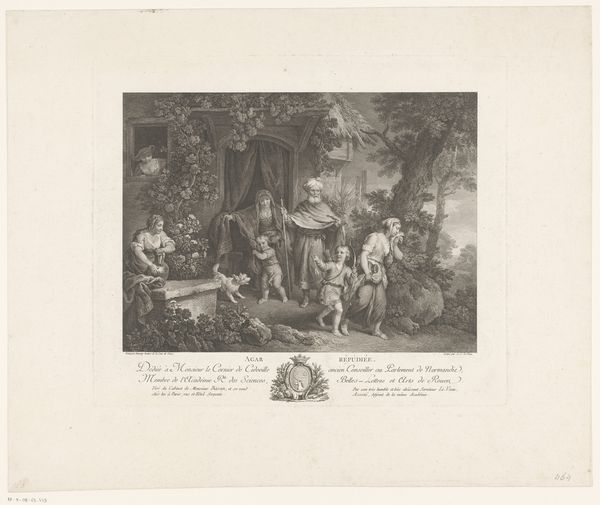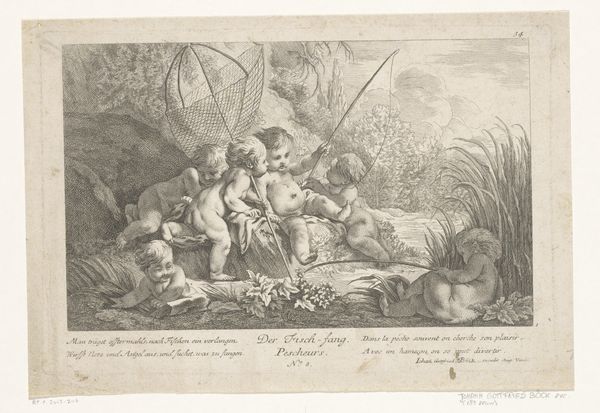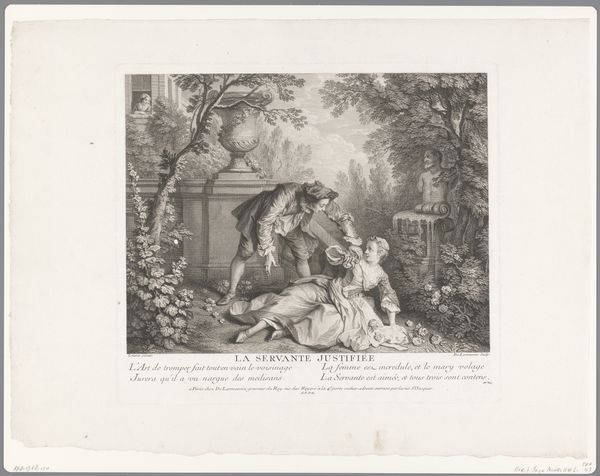
print, engraving
#
narrative-art
#
baroque
# print
#
classical-realism
#
figuration
#
history-painting
#
engraving
Dimensions: height 452 mm, width 560 mm
Copyright: Rijks Museum: Open Domain
Editor: This is Laurent Cars’s engraving, "Hercules and Cacus," from before 1755. The figures’ contorted poses create a lot of tension and drama. What strikes you most about this piece? Curator: I'm struck by how this engraving visualizes power dynamics. It’s not just a depiction of brute force, but of dominance. How do you see this reflecting the social hierarchies of the time it was made? Consider what heroism meant then. Editor: I suppose Hercules embodies a divinely sanctioned right to power. He’s restoring order against a monstrous figure, Cacus. Does the classical style of the engraving reinforce that sense of order and authority? Curator: Exactly! Think about how classical art was used to legitimize power. And it's more complex. Cacus, in some interpretations, represents the land and its resources. Hercules, then, becomes an agent of colonization, violently seizing what he desires. Does seeing it that way shift your perspective? Editor: Definitely! It's not just a simple heroic narrative. It becomes a commentary on power, ownership, and who gets to write the story. Curator: It speaks to how myths, like this one, can be reinterpreted to expose the underlying power structures they often naturalize. It really exemplifies the complex dialogue between art history and contemporary social concerns. Editor: Seeing it as more than just a heroic tale really opens up how we can understand this work and its message. Curator: And hopefully it will encourage listeners to challenge the traditional narratives we often take for granted.
Comments
No comments
Be the first to comment and join the conversation on the ultimate creative platform.
